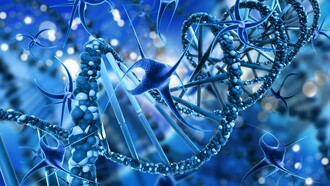Ethical Markets has been researching and reporting on the financialized global food system — a gigantic market-failure prone to speculation and perilously reliant on the planet’s 3% of fresh water, summarized in Earth: the Water Planet. We have identified many viable solutions to this:
- expanding food supplies with nutritious salt-loving plants, halophytes, which also capture ambient CO2 with their long roots thriving in deserts and restoring soil fertility. These plants have been thriving for centuries in 22 countries without fertilizers or pesticides and are arriving, at last, in supermarkets and gourmet restaurants. Examples include quinoa, amaranth, salicornia (sea asparagus) and China’s salt tolerant rice;
- growing global markets for plant protein-based foods and beverages and over 200 startup companies, many going public;
- ending industrial-scale, animal-based meat production, which emits 15% of all greenhouse gases and consumes half of the 40% of the agricultural land globally for pasturing cows, sheep, pigs, chickens, and growing their feed. Plants and halophytes can provide all the proteins necessary for human diets. The cell-based meats and fish now reaching markets, along with fermentation, are still producing cheese, beer, wines, kombucha and foods, as they have for centuries.
The latest shift is toward precision fermentation, where microbes can now be designed beyond traditional uses, to produce many other forms of proteins including analogs of dairy, milk, eggs, chicken and flours for bread, pancakes, etc. For example, Finland based Solar Foods produces a variety of microbe-based foods and was first described in Saving Our Bacon by George Monbiot, who visited Solar Foods in 2020. US-based groups are calling for public investments to expand protein alternatives.
In our annual Green Transition Scoreboard® reports Capturing CO2 While Improving Human Nutrition and Health and Transitioning to Science-Based Investing, we began advocating many of these solutions now coming to light. In the report Global Transition to Halophyte Agriculture May Be Inevitable, I also identified the arrayed opposition: agrochemical industrial farming; producers of farm machinery, pesticides, fertilizers and animal proteins; global commodities-trading companies speculating in mono-cultured cereals; as well as the global junk foods marketers, advertisers and mass media.
These massive lobbying forces are still opposing healthier foods and contributing to the now-obvious planetary crises, yet new scientific solutions are at last breaking through. This structural rethink and redesign of our global food system begins with acknowledging the planet’s 97% abundant saltwater and the overlooked half of all plants which thrive on salt water now reaching gourmet restaurants and food markets.
Today, reengineering the global food systems is accelerating based on the afore-mentioned transitions now emerging:
- shifting from meat products produced by slaughtering animals and fishing, to stem-cell cultured analogs and plant-based foods, beverages, and coastal kelp farms. We also noted the traditional insect-based foods still eaten by 2 billion humans globally;
- precision fermentation using advanced bioreactors and additional microbes beyond their traditional uses in fermenting kimchi and other foods, cheeses and wines, as well as producing most insulin for diabetics;
- parallel microbial production of proteins from ambient CO2, microbes from soils, lake bottoms and warm water with feedstocks of hydrogen, methane and carbon, now produce a full range of human foods as well as other materials and fuels. These methods were initiated by NASA in the 1960s looking for ways to feed humans on long space trips, deriving proteins only from human excretions (breathing, perspiration, feces and urine): see Dark Food: Feeding People in Space Without Photosynthesis, which summarizes this research and cites a group of companies from this research which are still providing proteins for pet foods and other uses;
- a handful of additional companies are already marketing proteins directly from ambient CO2, including Air Protein headed by a former NASA scientist, Dr. Lisa Dyson. Bio Market Insights, reports a rush of investors in precision fermentation, including Berlin-based Formo with $50 million dollars; California’s The Everything Company with $175 million dollars; Perfect Day’s $300 million dollars; Zero Acres $37 million dollars for microbial vegetable oils, and other startups.
Global implications
We agree with London-based think tank, RethinkX reports, which see these scientific advances offer opportunities to bend down global CO2 emissions to meet the IPCC’s 10-year time frame and keep global warming at or below the current 1.2 degrees Celsius. Some of their predictions include:
- land-based agriculture becomes irrelevant for food, while halophyte foods also capture ambient CO2 and restore deserts, along with growth of kelp in oceans and other nourishing gourmet foods;
- the half of all lands used for financialized agro-industrial farming can now be rewilded, while supporting local indigenous groups' use of wild and local foods. Small farms should still be encouraged to continue local production for use, rather than for global markets. This is indigenous peoples’ traditional role in preserving fertility and biodiversity worldwide;
- recognizing that all foods come from bacteria, while humans’ digestive systems are operated by our own gut bacteria in our microbiomes. Thus, Andrew H. MacDougal merely confirms these realities in Would you eat bacteria to help reverse climate change? in the Bulletin of the Atomic Scientists;
- providing all global electricity from renewables; solar, wind, oceans, green hydrogen, and geothermal sources. This also assures energy efficiency of microbial protein production. All elements in batteries and storage should be recyclable. Ban all unnecessary mining (e.g. of gems) or minerals from the earth’s crust which can be replaced with collecting pure ore nodules aggregated in oceans over eons by nature, discussed in Politics of Production;
- rethinking circularity to ensure recycling and reuse are never ‘add-ons,’ but instead reduce production and consumption from virgin resources. Ecologist Elizabeth L. Cline warns in Will the Circular Economy Save the Planet? that, so far recycling and reuse have not stopped any expansion of exploitation of virgin resources.
All of these transitions overturn most economic models, global finance and over-use of price-based macroeconomics indicators (e.g. GDP, inflation, debt, deficits, income and wealth). Price-based metrics must be augmented with science-based data which include all the real-world risks. We launched with asset manager Calvert in 2000, our alternative to GDP: the Calvert-Henderson Quality of Life Indicators, with 12 domains; less than half were measured in money. Prices are a function of human ignorance, allowing ‘externalities’ to be excluded in balance-sheets, as explained in Ending Externalities: Transitioning to Full-Spectrum Accounting.
Biology teaches us that evolution proceeds in unexpected jumps — quite different from the trivial unreality of Silicon Valley’s money-driven collective insanities of ‘disruption’. These illusions of profits from replacing ever more sectors with digitization and virtual reality are still based on fossil electricity and farming their billions of users’ data — an evolutionary cul-de-sac.
We are all about to be tested. Will we clear our brains of conceptual errors, expand our planetary awareness and grasp these promising solutions? Stay tuned.















